- Events & Programs Home
- Calendar
- Accessibility
- Adults
-
Families & Teens
- Families & Teens Home
- 10x10 Teen Art Expo
- Art on the Rise
- Art Together: Art Making for Families with Children Ages 3–5
- Babies Sing with May Festival Minis
- Boy Scouts / Girl Scouts
- CAM Kids Day
- Family Storytime and Gallery Walk
- Family Studio: Art Making for Families with Children Ages 6–12
- Games in the Galleries
- Members-Only Baby Tours
- Public Baby Tours
- REC Reads
- Rosenthal Education Center (REC)
- Saturday Morning Art Class
- See Play Learn Kits
- Summer Camp
- Teachers
- Community Outreach
- Fundraisers
- Plan Your Own Event

- Events & Programs Home
- Calendar
- Accessibility
- Adults
-
Families & Teens
- Families & Teens Home
- 10x10 Teen Art Expo
- Art on the Rise
- Art Together: Art Making for Families with Children Ages 3–5
- Babies Sing with May Festival Minis
- Boy Scouts / Girl Scouts
- CAM Kids Day
- Family Storytime and Gallery Walk
- Family Studio: Art Making for Families with Children Ages 6–12
- Games in the Galleries
- Members-Only Baby Tours
- Public Baby Tours
- REC Reads
- Rosenthal Education Center (REC)
- Saturday Morning Art Class
- See Play Learn Kits
- Summer Camp
- Teachers
- Community Outreach
- Fundraisers
- Plan Your Own Event
Recall. Reframe. Respond. The Art of Paul Scott
Recall. Reframe. Respond. The Art of Paul Scott
- Home
- Plan Your Visit
- Art
-
Events & Programs
- Events & Programs Home
- Calendar
- Accessibility
- Adults
-
Families & Teens
- Families & Teens Home
- 10x10 Teen Art Expo
- Art on the Rise
- Art Together: Art Making for Families with Children Ages 3–5
- Babies Sing with May Festival Minis
- Boy Scouts / Girl Scouts
- CAM Kids Day
- Family Storytime and Gallery Walk
- Family Studio: Art Making for Families with Children Ages 6–12
- Games in the Galleries
- Members-Only Baby Tours
- Public Baby Tours
- REC Reads
- Rosenthal Education Center (REC)
- Saturday Morning Art Class
- See Play Learn Kits
- Summer Camp
- Teachers
- Community Outreach
- Fundraisers
- Plan Your Own Event
- Give & Join
- About
- Tickets
- Calendar
- Exhibitions
- Collections
- Blog
- Shop
- Art
- Exhibitions
- What, Me Worry? The Art and Humor of MAD Magazine
- Recall. Reframe. Respond. The Art of Paul Scott
- Rediscovered Treasures
- Special Features
- Upcoming Exhibitions
- Past Exhibitions
- Online Exhibitions
- Explore the Collection
- Provenance and Cultural Property
- Conservation
- Meet the Curators
- Digital Resources
- Art Bridges Cohort Program
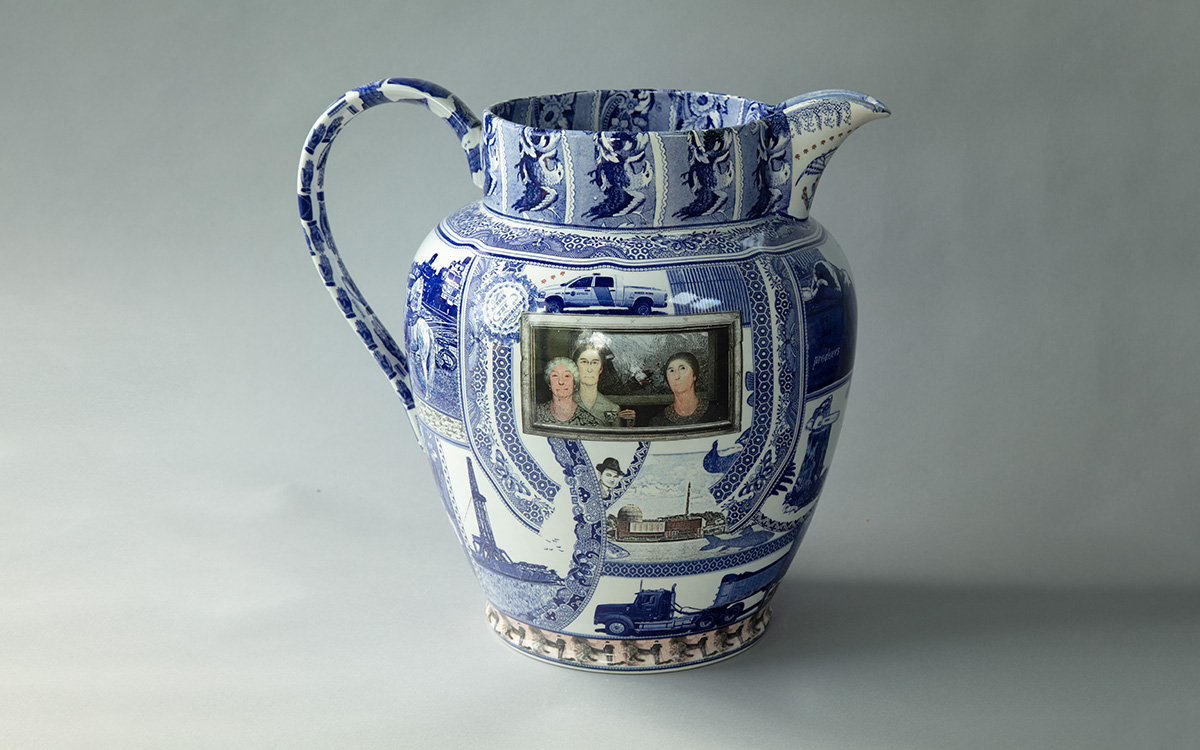
Sampler Jug, No. 11, Wood Cuts (After Grant), Heritage, and the Sleep of Reason, from the series Cumbrian Blue(s), New American Scenery, 2025, Paul Scott (British, b. 1853), transfer print collage on pearlware jug, Courtesy of Paul Scott and Ferrin Contemporary, © Paul Scott, photo credit: Paul Scott

Missing and Third Persons, from the series Cumbrian Blue(s), New American Scenery, 2025, Paul Scott (British, b. 1953) and Terence Hammonds (American, b. 1976), transfer print collage on pearlware lidded vase, Courtesy of Paul Scott and Terence Hammonds, © 2025 Paul Scott and Terence Hammonds, photo credit: Paul Scott

Sampler Jug (after Stubbs), No. 8, from the series Cumbrian Blue(s), New American Scenery, 2022, Paul Scott (British, b. 1953), transfer-printed collage on pearlware jug, Courtesy of Paul Scott and Ferrin Contemporary, © 2022 Paul Scott, photo credit: John Polak
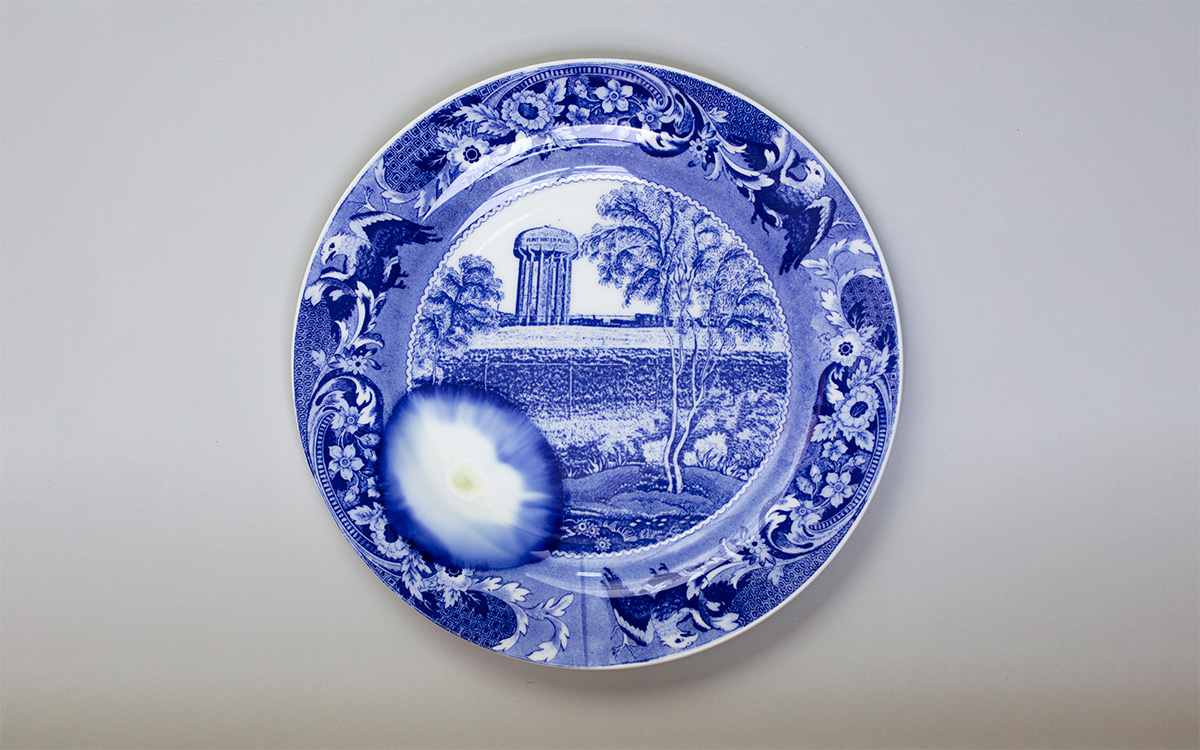
Flint, near Detroit, No. 4, from the series Cumbrian Blue(s), New American Scenery, 2020, Paul Scott (British, b. 1953), transfer-printed collage with melted lead on bone china plate by Royal Worcester (English, est. 1751), Courtesy of Paul Scott and Ferrin Contemporary, © 2020 Paul Scott, photo credit: Paul Scott
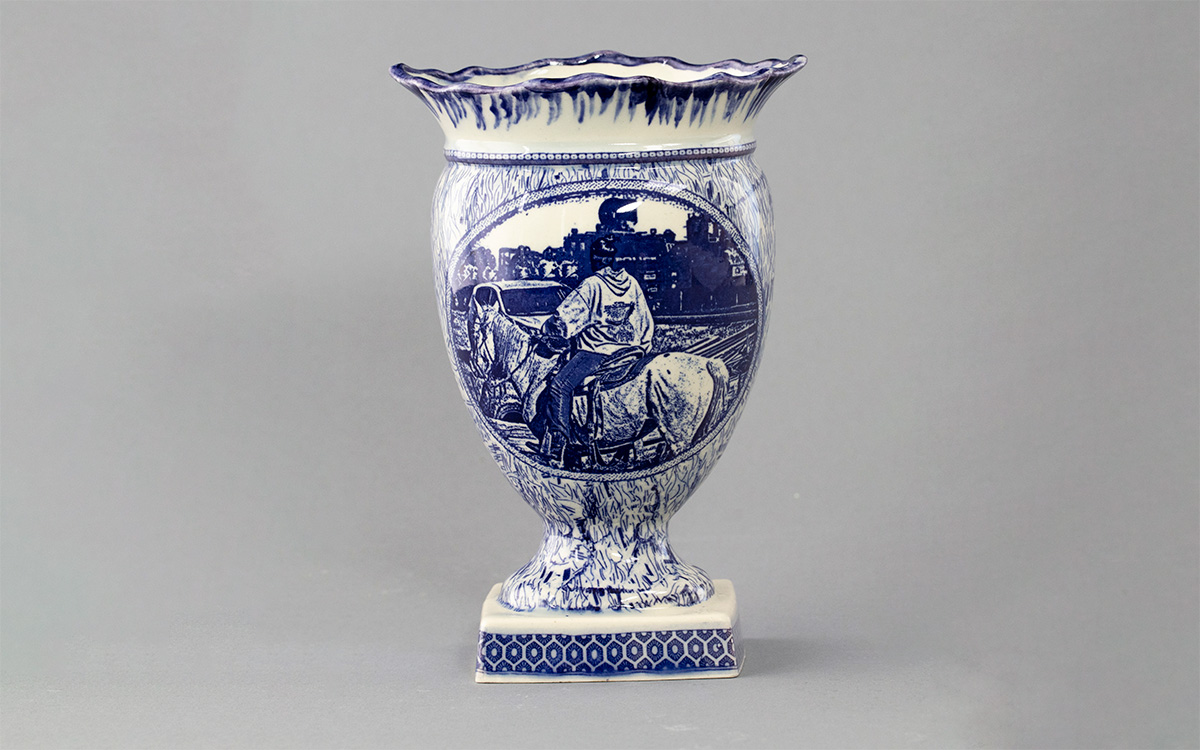
Posy Vase, No. 3, Broken Treaties & Leonard Peltier, 2025, Paul Scott (British, b. 1953), transfer print collage on pearlware posy vase, Courtesy of Paul Scott and Ferrin Contemporary, © 2025 Paul Scott
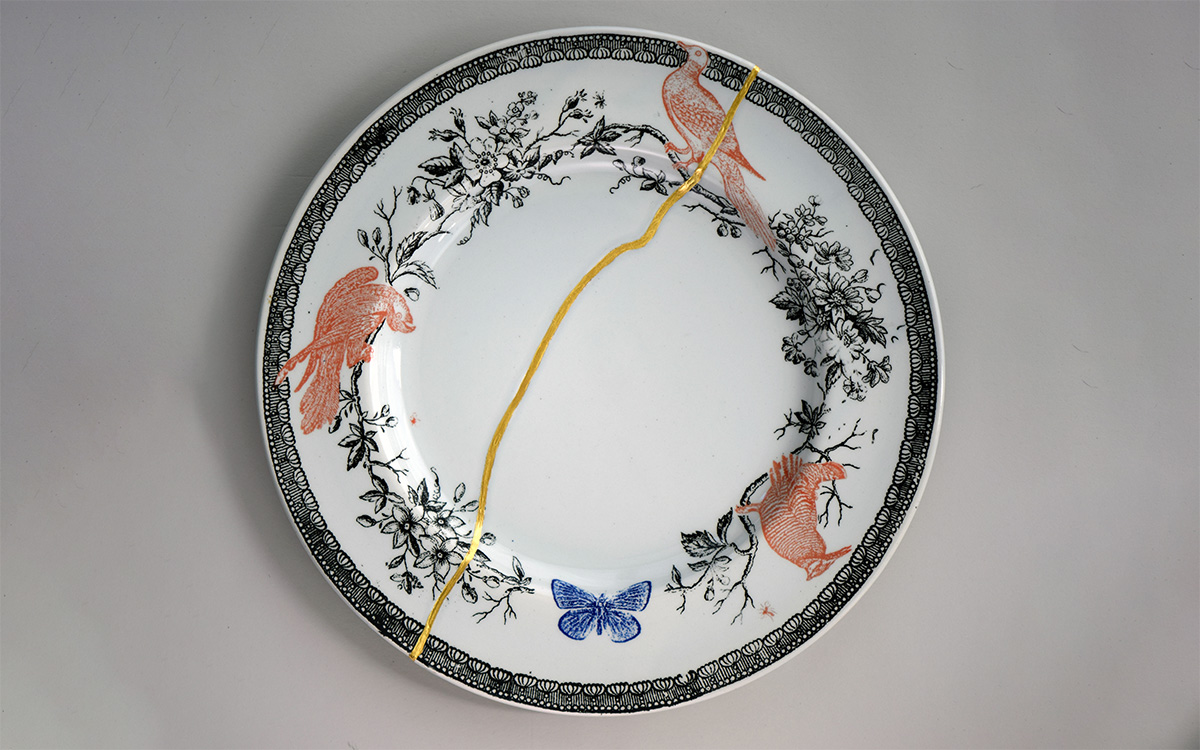
Forget Me Not, Extinct, No. 1, Heath Hen, Carolina Parakeet, Passenger Pigeon, Xerces Blue, No. 3, from the series Cumbrian Blue(s), New American Scenery, 2020, Paul Scott (British, b. 1953), transfer-printed collage on pearlware plate with kintsugi, Courtesy of Paul Scott and Ferrin Contemporary, © 2020 Paul Scott, photo credit: Paul Scott
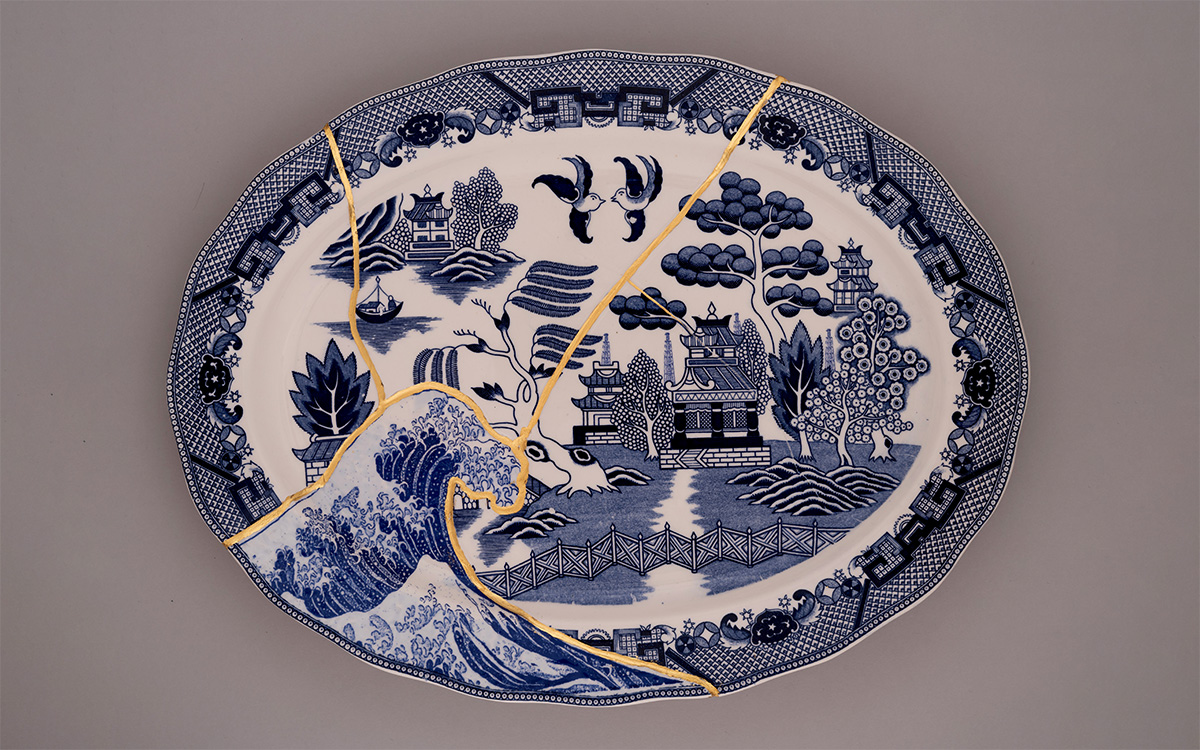
Fukushima, No. 11, from the series Cumbrian Blue(s), 2025, Paul Scott (British, b. 1953), transfer-printed collage with kintsugi on broken and re-assembled Willow earthenware plate, circa 1965, by a once-known Japanese manufactory, Courtesy of Paul Scott and Ferrin Contemporary, © 2025 Paul Scott, photo credit: Chris Lewis
Recall. Reframe. Respond. The Art of Paul Scott
October 10, 2025–January 4, 2026
Vance Waddell and Mayerson Galleries (Galleries 124 and 125) and select Cincinnati Wing and American Galleries
Free Admission
Press Release
At first glance, artist Paul Scott’s transfer-printed tableware* may look familiar—like something you have seen in your grandparents’ china cabinet or a second-hand shop. Look closer and you will notice subtle differences that add up to a powerful narrative shift. Scott (British, b. 1953) subverts this seemingly unassuming blue-and-white “cultural wallpaper” to create sharp, thought-provoking social commentary. Working with new ceramic forms or repurposing antique pieces, Scott breaks, reassembles, erases, and adds details using screenprinting, engraving, and collage processes to create new “historical” patterns. Broadly, his works address updated narratives about art, history and American experiences.
During a visit to Ohio State University in 1999, Scott encountered a new genre of historical blue-and-white transferware. Beginning in the mid-1800s, manufacturers in Staffordshire, England, produced these objects specifically for American collectors. Long familiar with British transfer-printed ceramics, Scott knew little about those made for export—wares that memorialized certain American figures, landscapes, architecture, industries, and historical events. Since then, Scott has become one of a long line of travelers and observers who have visited and then written about or depicted this country, offering an outsider’s perspective. To this end, the artist’s New American Scenery series reflects his personal experiences of being and traveling in America, and, in his words, the need to “rebalance the narrative with something more contemporary and inclusive.”
Ripe for reframing and responding, the museum’s American art collections will serve as a springboard for Scott to present existing and new works, inviting various perspectives and initiating conversations about our shared American experience.
Share your feedback about the exhibition.
*Transfer-printed ware, or transferware, describes industrially produced ceramic tableware that has a decorative pattern applied by transferring a print first from an engraved copper plate to special paper and finally to the ceramic’s surface. This term also applies to modern wares with printed graphic surfaces made using more recent printmaking techniques and decal transfer technologies.
Accessing the Exhibition
This exhibition is presented on the museum’s first and second floors. It is recommended that visitors begin their experience in Galleries 125 and 124, located directly across from the Terrace Café. Then, follow the map provided in these galleries to access additional works presented in the first-floor Cincinnati Wing and the second-floor American galleries. Elevators A and B provide the most direct access to the second-floor galleries. Seating is provided throughout the galleries. Large print label booklets are available in Gallery 125 and online. Audio of select exhibition interpretation is available online and on the Bloomberg Connects app. For fidgets, social narratives, sensory headphones, and other tools, visit our CAM Access Cart. The Access Cart is located in the Schmidlapp Gallery just beyond the museum’s front lobby.
Featured Media
Free Exhibition Tours
Every Thursday from October 16, 2025–January 1, 2026, 6:30–7:30 p.m.
Members Opening
Thursday, October 9, 2025, 5–6 p.m.
CAM Presents: Paul Scott on Recall. Reframe. Respond.
Thursday, October 9, 2025, 6–7 p.m.
CAM Kids Day: Tea Party
Evenings for Educators - Recall. Reframe. Respond. The Art of Paul Scott
Thursday, November 13, 2025, 4–7 p.m.
Create Plus: Collaged Histories with Terence Hammonds
Saturday, November 15, 2025, 2–4:30 p.m.
Curator Conversation: Amy Dehan on Recall. Reframe. Respond. The Art of Paul Scott
Thursday, December 4, 2025, 6–7 p.m.
UnchARTed—From Plate to Pen: Ceramics and Poetry in Conversation
Saturday, December 13, 2025, 1–2:30 p.m.
Cincinnati, OH 45202
Toll Free: 1 (877) 472-4226
Museum Hours
Museum Shop
Terrace Café
Library
Cincinnati Art Museum is supported by the tens of thousands of people who give generously to the annual ArtsWave Campaign, the region's primary source for arts funding.

Free general admission to the Cincinnati Art Museum is made possible by a gift from the Rosenthal Family Foundation. Exhibition pricing may vary. Parking at the Cincinnati Art Museum is free.
Generous support for our extended Thursday hours is provided by Art Bridges Foundation’s Access for All program.

General operating support provided by:



 Community Voice Responses
Community Voice Responses
 Video - Paul Scott: Reanimating History
Video - Paul Scott: Reanimating History
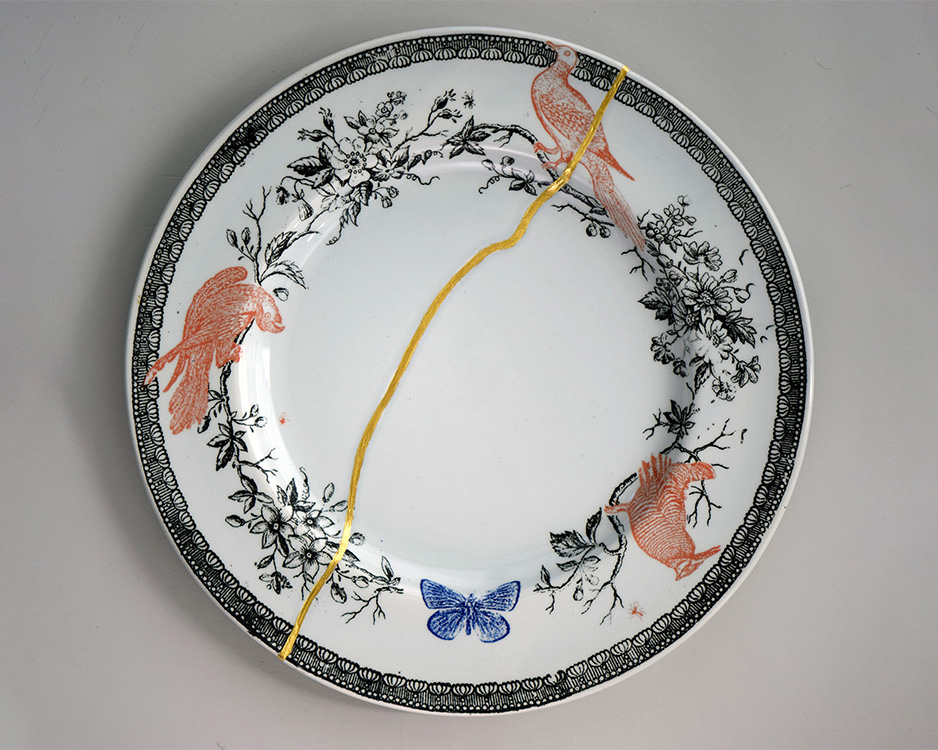 Accessible Audio
Accessible Audio
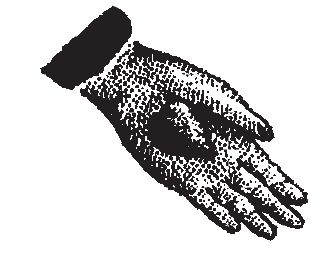 More to Know
More to Know
